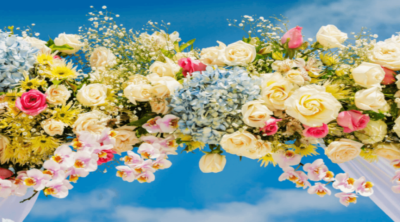“A wedding ring is a symbol of commitment; a promise, a pledge and a vow. The promise is to forsake all others, to stay devoted and true; the pledge is to honor that promise selflessly, to see the whole thing through; and the vow is to keep that pledge unwaveringly, until the days are few. It is a mutual agreement to become one instead of two.” J.W. Lord
Wedding rings are supposed to last a lifetime. After all, they are symbols of forever. Today rings are shaped in gold or silver, so they will last. The engagement ring typically has more detailed designs. The latest trends in wedding jewelry are usually about the shape and design of the diamonds and other gems.
Wedding Rings Around the World
The first people known to wear wedding rings were Egyptians. The unbroken circle was a powerful symbol in that culture. A rings symbolizes immortality, never-ending love and life. Most importantly rings were symbols of marriage. They made rings out of leather, reeds or even bones. And both husband and wife wore rings.
The ancient Romans also wore wedding rings. People placed these rings on the third finger (beside the pinkie) of the left hand. Romans believed that there was a vein that ran from that finger, directly to the heart. This was a false belief. Nevertheless, wedding rings were worn to validate the “hand-to-heart” connection.
In India, Portugal, Columbia, Spain and Greece people wore their wedding rings on the right hand, for generations. It is common to wear wedding rings on the left hand fourth finger in Norway, Denmark, Poland and Russia.
Some traditions were continued for hundreds of years. For instance, only brides or females wore wedding rings in most Western countries. This includes the US and Canada. But the groom did not wear the rings even in some polygamous marriages.
The Ring Exchange
In more recent times, exchanging and wearing wedding rings is more mutual. Wedding rings are still worn on the left hand, in most parts of the world. And the rings are an acknowledgement of love between two people.
An engagement ring reflects the commitment that the couple will marry. Traditionally, future wives were given the ring by future husbands. In modern same-sex engagements there are no established traditions. Who proposes, and who wears a ring, is up to the couple. The LGBT community is establishing new norms to reshape individual and couple-centric customs.
The engagement ring seals the commitment. And the wedding ring (band) recognizes that there is a marriage. When you wear the ring it shows that you are married, committed, and have a life partner.
Wedding rings can be specifically designed for and by the engaged couple. Sometimes they are engraved on the inside with the couple’s names, wedding date or other terms of affection. Although matching wedding bands are optional, many couples choose them. And some couples even buy three rings as a matching trio set. The couples commitment is reflected in the matching rings.
You exchange rings during the wedding ceremony. This takes place at the time of the wedding vows. You place the wedding band on the same finger as the engagement ring. This is called “stacking” the rings. The tradition of the “hand-to-heart” connection is continued with the wedding ring worn over the engagement ring.
Wearing wedding rings symbolizes the love and commitment that two people have made to each other. By wearing these rings, the couple shows their intention to be together forever.


